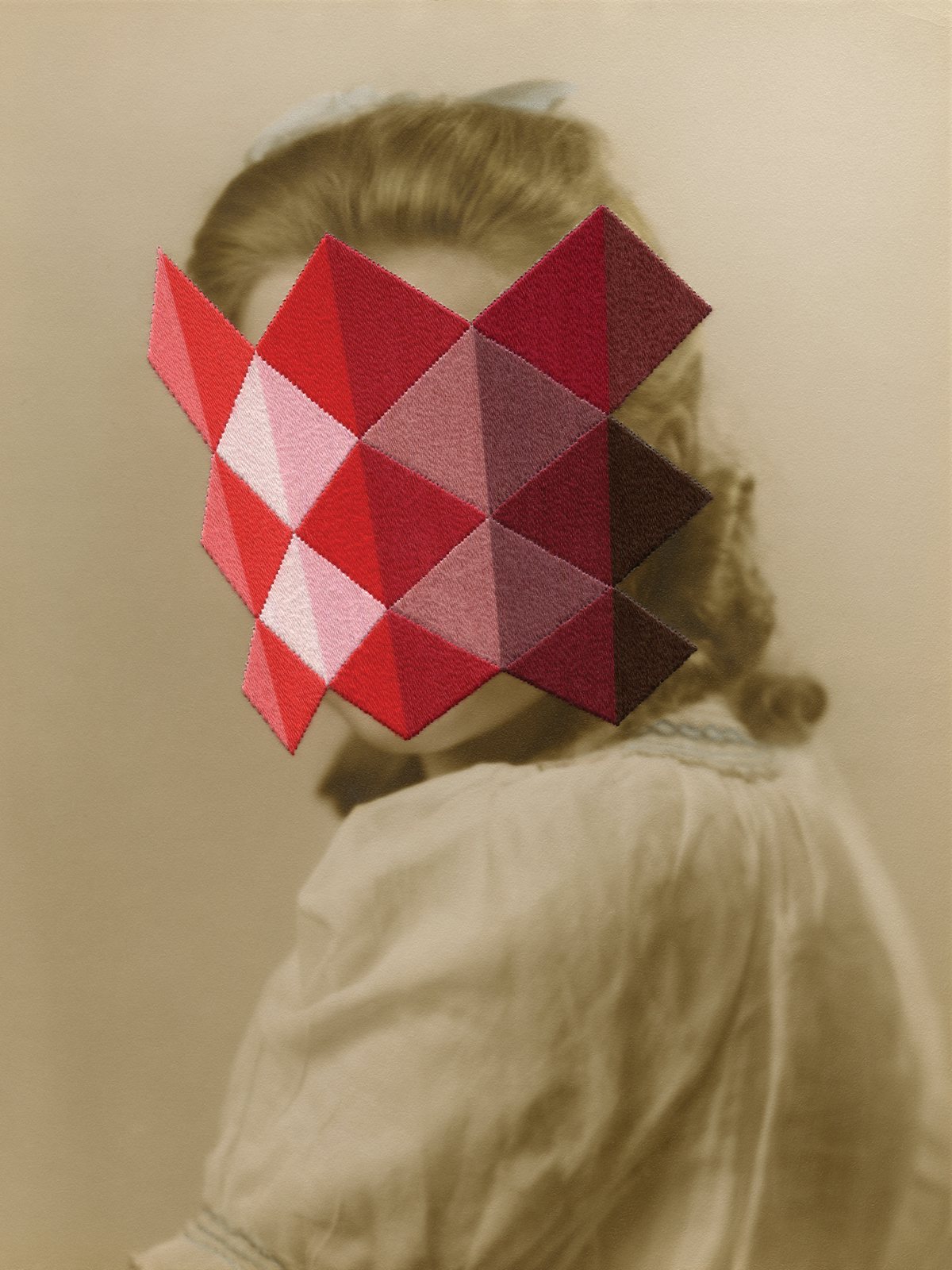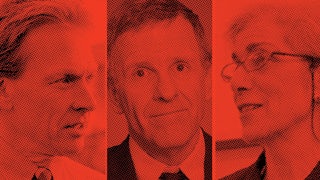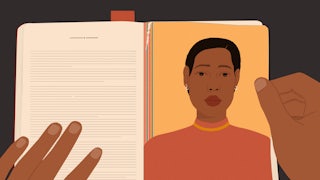When Sheila Heti’s novel How Should a Person Be? was published in 2010, it seemed for a moment that literary fiction might once again be the best place to take the pulse of the culture. Subtitled A Novel From Life, it is an apparently autobiographical story about a young writer in Toronto named Sheila and her friend Margaux, based on the painter Margaux Williamson. Heti suggested in interviews that this blurring of the line between fiction and reportage was partly inspired by the MTV quasi-reality show The Hills: “It was like, these girls are friends, and somebody’s editing their lives in some way.… What if we cast ourselves as those girls have been cast?” Many reviewers took this idea literally, treating the book less as literature than as a prose equivalent of a TV show. “Think HBO’s Girls in book form,” Marie Claire instructed. Entertainment Weekly took the logical next step by having Lena Dunham review the book.
What these pop-cultural comparisons bestowed in buzz, however, they tended to begrudge in literary value. The New York Times review of How Should a Person Be? said that it “shares with much reality television a kind of episodic aimlessness, and a focus on young, self-involved characters who spend a lot of time thinking about how they look to other people.” In The New Yorker, the critic James Wood quoted a bit of dialogue and observed: “If I wanted to hear that, I could settle in at a Starbucks and wait for the schoolkids to get out at three o’clock.”

A decade later, Heti is still thought of as a writer of “autofiction,” like Ben Lerner, Rachel Cusk, and Tao Lin—writers who bring the freedom of fiction to the story of their own lives. But in her new book, Pure Colour, Heti secedes from that school, writing in the third person about a fictional protagonist, Mira. What’s more, for much of the book, Mira’s soul takes up residence in a leaf along with the soul of her dead father, where they carry on a dialogue about God, the cosmos, and reincarnation. It’s very much not the kind of thing you would overhear at Starbucks, and Pure Colour makes clear that Heti has always been a different kind of writer than advertised: not the voice of a generation or a chronicler of postmodern ennui, but a humanist and a seeker. Her abiding subject is the nature of personhood, of human being. As she puts it in her 2018 novel, Motherhood, “I am sitting here, writing, in order to discover the simple secret of my existence—what sort of creature I am.”
This is a philosopher’s question more than a novelist’s, and in a sense Heti has become less of a novelist with each book, until with Pure Colour she emerges as almost a mystic. The title comes from Mira’s childhood memory of her father promising to “buy her all sorts of mysterious, rare and marvelous things, including pure colour—not something that was coloured, but colour itself!” It seems that he was simply referring to paints, since Heti goes on to write that “colour itself came in hard little circular discs,” as on a palette. But what captures Mira’s imagination is the Platonic suggestion that color could be a thing in itself rather than a property of other things.
With pure color, “its outside was what it was all the way through. But unlike a gemstone, it didn’t emanate colour. Its colour sat there, turned inwards. Pure colour was introverted, like a shy little animal.” Heti’s language suggests that such authenticity and integrity aren’t only aesthetic qualities, but moral ones. She has always seen art as having more to do with spirit than beauty; as Margaux says in How Should a Person Be?, “I’m interested in meaning, not paintings.”
In its self-sufficiency, pure color withdraws from connection to other things. Rather than appealing to the eye or demanding to be applied to a canvas, it only wants to be left alone. This is the same problem that, transposed to the human realm, is the recurrent subject of Heti’s fiction. In each of her four novels, the narrator is entangled in a central relationship that threatens to violate their purity, to tear them away from themselves—a prospect they find as fascinating as it is dangerous.
This pattern appears as early as Heti’s first novel, Ticknor, which on the surface is completely unlike the books she would go on to write. Published in 2005, at a moment when novelists from Don DeLillo to Jonathan Safran Foer were trying to prove that fiction was equal to explaining 9/11, Ticknor was aggressively untimely. It is an imaginary monologue by a real nineteenth-century American man of letters, George Ticknor, known in his day as a scholar of Spanish literature but now almost totally forgotten. Most of the book consists of Ticknor’s ruminations as he makes his way through the cold streets of Boston, to a party hosted by William H. Prescott, a much more successful writer whose histories of Latin America made him famous.
The real Ticknor, Heti acknowledges in a note, “lived a life of popularity and literary success” and was a good friend of Prescott, assisting his research and eventually writing his biography. Heti’s Ticknor, by contrast, is an American cousin of Dostoevsky’s Underground Man—an embittered intellectual seething against the world. Prescott, a childhood friend who now barely tolerates Ticknor’s presence, becomes his obsessive symbol of life’s injustice. Why should Prescott have “the love of the press and his friends and the same warm household that so many are privileged to enjoy, a complete glory shining down on him,” while Ticknor literally reeks of failure? “I think there is something that—call it a smell if you will—emanates from my body and betrays what kind of man I am today and the position I have secured for myself, which, despite great effort, is slight,” he mutters to himself in Heti’s formal yet hectic prose.
It is all a long way from the twenty-first–century Toronto of Heti’s subsequent books. Yet Ticknor is clearly an ancestor of “Sheila” and her other protagonists—a writer who longs for greatness but feels there is someone blocking his way. Worse, it is someone with claims on his affection and loyalty, whom he nevertheless can’t help resenting.
Heti’s mature novels take this basic situation and develop it in more searching and unexpected ways. Each places the main character in a different type of relationship and tests the pressure it exerts on her vocation and her sense of “what sort of creature I am.” In How Should a Person Be?, it is friendship: Margaux is Sheila’s first close female friend, and she struggles to mute her competitiveness, to balance independence with intimacy. In Motherhood, of course, it is being a mother, as the narrator spends her late thirties thinking about whether her identity as an artist is compatible with having a child. Now Pure Colour looks at parenthood from the other side, showing that having a parent can be just as challenging as being one.
The book begins by telling the story of how Mira, a young woman working in a lamp store, falls in love with Annie, who is older and seems reluctant to reciprocate her feelings. When the relationship comes to nothing, Mira reflects, “All that time, all that stupid time, I should have been with my father”—for her father is dying, and once he is gone, she will never see him again.
Or so she thinks. In fact, her father’s death only begins a new and more intimate phase of their relationship. Far from being shattered by it, Mira feels a “great joy and calm,” which she believes is a sign that “the spirit that had been in her father entered her.” This is not meant figuratively, as if the daughter had become the bearer of the father’s memory or legacy, but in quite literal terms: “It came in through her chest and she felt it there in her entire body—near the top of her skull, down in her toes, swirling wonderfully inside her.” Later she uses a more transgressive image: “She had felt his spirit ejaculate into her, like it was the entire universe coming into her body, then spreading all the way through her, the way cum feels spreading inside, that warm and tangy feeling.”
But actual sexual relationships in Heti’s fiction are never as emotionally fraught or philosophically interesting as the one between Mira and her father. When their souls take refuge together in a leaf, they finally have the chance to discuss the most important questions: the meaning of life and death, the future of civilization, the destiny of the cosmos. Mira’s warm feeling turns out to be connected to the secret at the heart of many religious traditions—that our fear of death is based on a misunderstanding.
In reality, she discovers, there is no such thing as death, because our individual lives are just temporary modes of existence for a universe that is eternal. “She knew that one day death would find her, the same way it had found him—but that this was nothing to fear, or to feel too sad about, for there would always be something vaster that would hold you in its arms, something vaster even than a loving daughter. You would be held in the universe’s arms, but you would also be its arms,” Mira reflects.
The story of Mira and Annie returns at the end of Pure Colour, but it’s characteristic that Heti makes the romantic plot a framing device for a philosophical dialogue. Romantic and sexual relationships do figure in Heti’s work: How Should a Person Be? describes the collapse of Sheila’s early marriage, while in Motherhood she writes about her long-term partner, Miles, who firmly supports her decision not to have children. But these aren’t the kinds of relationships that raise ultimate questions for Heti, perhaps because, as she writes in How Should a Person Be?, they aren’t difficult enough: “Ever since I was a teenager, I had been drawn to men exclusively, and they drew themselves to me—as boyfriends, as friends. They pursued me. It was simple.”
Another explanation might be that in romantic relationships, it is expected for both partners to be selfish, to focus on their own needs and feelings. Parent-child relationships are more complicated, because they blur the boundaries of the self. The child fights to create an individual identity separate from her parents, while the parents must contract their egos to prioritize the needs of the child. “There had always been a push and pull between them,” Heti writes about Mira and her father, “always a closeness and a desire to be rid of that closeness, neither of them being able to fix their uncomfortable nearness and farness, or to understand what distance was best.”
In Motherhood, Heti decides that this kind of unbounded intimacy is incompatible with artistic self-centeredness. This may sound like egotism, but if so, it’s more than garden-variety selfishness; making art is a sacrifice to an invisible recipient, one that is less tangible than a child but equally real. “You’re in a relationship with some force that is more mysterious than yourself,” Heti writes. “As for me, I suppose it has been the central relationship of my life.”
This is almost the language of religious faith, and another of Heti’s untimely qualities is that she is very serious about the idea of vocation. It was easy for readers of How Should a Person Be? to take her sarcasm on the subject at face value. “We live in an age of some really great blow-job artists. Every era has its art form. The nineteenth century, I know, was tops for the novel. I just do what I can not to gag too much,” she writes in an often-quoted passage.
But this is hardly an endorsement of the twenty-first century or its favorite art form, just as Heti’s use of reality-TV techniques and Warhol-style tape recording doesn’t mean she shares the idea that anyone can and should be famous. In fact, this cynical apothegm comes right after an expression of disgust at the present: “I look at all the people who are alive today and think, These are my contemporaries. These are my fucking contemporaries!” When your contemporaries make an idol of Paris Hilton, whose 2004 sex tape is alluded to in the book, perhaps the only way to avow a longing for a more old-fashioned kind of fame is ironically. “I don’t want anything to change, except to be as famous as one can be, but without that changing anything,” Heti writes. “Everyone would know in their heart that I am the most famous person alive—but not talk about it too much.”
This is hyperbole, of course—elsewhere in the book she compares herself to Moses, called by God to lead the people out of bondage. But it’s not a joke when Heti says that her vocation as an artist has something to do with her soul. “It is time to just go into a cocoon and spin your soul,” Sheila tells herself in How Should a Person Be? She returns to the image in Motherhood, describing writing as a process of building a “cocoon of time and space, where everything stills, and my self becomes mush, and something new is formed.”
In this way, writing is parallel to giving birth, which she defines as “trapping an immortal soul inside a mortal body.” Heti decides that artistic soul-making precludes the biological kind, and here again she is a Platonist. As Plato says in the Symposium, “Those who are pregnant in the body only, betake themselves to women and beget children…. But souls which are pregnant—for there certainly are men who are more creative in their souls than in their bodies …are poets and all artists who are deserving of the name inventor.”
Artists who have given everything to their vocation often reach a crisis in middle age, when they confront the limits of their achievement and the approach of mortality. For Heti, Pure Colour seems to be the product of such a crisis, and the book is as much about the death of a certain idea of the artist as it is about the death of Mira’s father. One of the book’s key mystical ideas is that the world we inhabit is only God’s “first draft,” which he will eventually tear up in order to produce a better version. “People as you know them won’t be here for the second draft of existence,” Mira’s father tells her.
And that means art won’t be here either. Plato says that art offers an escape from mortality and oblivion, and that is why Mira loves it: “Art would never leave us like a father dying. In a way, it would always remain,” she tells herself. Later, her father’s soul teaches that this is a delusion: “Art is made for our situation. Whatever comes will be in another situation, and our art won’t be needed for it.” Yet he insists this isn’t a cause for sorrow, any more than death itself, since everything that exists is transitory: “It’s not sad for things to be useful in their time, art included.” Pure Colour confirms that, in our time, Sheila Heti is one of the most useful writers of all.






